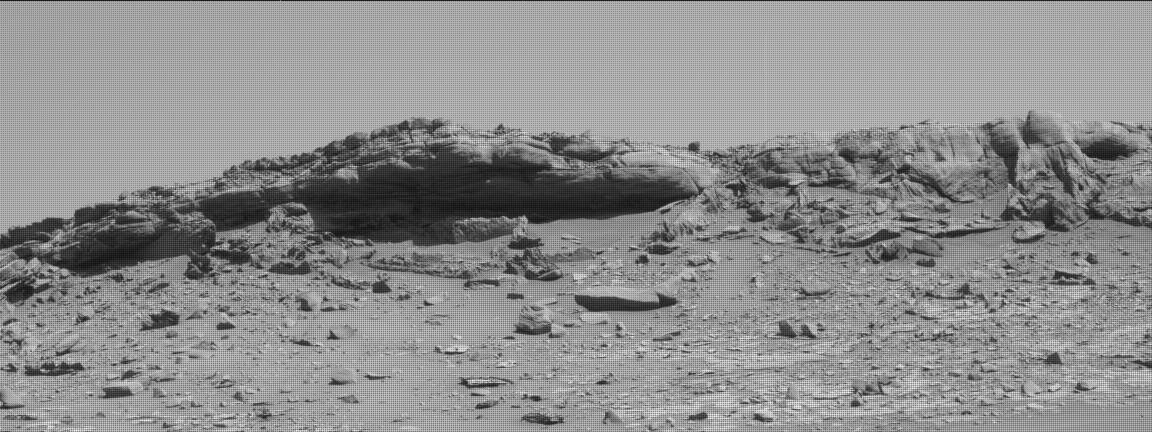2 min read

When the operations team logged on today, we were prepared to pick up where Monday’s team had left off in Curiosity’s ongoing drill campaign at Zechstein. But then we received some news: even though the original plan already included two hefty science blocks, the rover still had extra energy to spare! In order to take advantage of this excess energy, the team added yet another science block to the plan and strategically positioned it to occur in the morning around 8 AM local Martian time. While science blocks typically occur during the middle of the day, this early morning time was desirable because it would provide better illumination for acquiring a ChemCam RMI image of a complex rock outcrop nearby (shown in the Mastcam image above). Plus, the additional heating needed to operate instruments during the cold morning hours would use up more of the rover’s spare energy. In other words, this new morning block was beneficial for both science and operations—a win win!
The other two science blocks in the plan were also filled to the brim with activities: two Mastcam mosaics were planned on local bedrock including target "Hare Stone," and a third Mastcam mosaic will provide stereo coverage of a curved sand ripple that can be seen from orbit. A ChemCam Passive observation will collect supplementary data on a pebble that was studied previously using ChemCam LIBS. Additional ChemCam LIBS measurements and associated Mastcam documentation images will be acquired on bedrock targets "Tong Saltings" and "Stack of Handa." A third Mastcam documentation image of the Zechstein drill hole will be used to monitor wind-driven changes in the drill tailings. The rover will also collect a set of environmental Navcam observations including dust devil, suprahorizon, and zenith movies, as well as a line-of-sight image for studying atmospheric dust levels. Even with all the activities planned over the next two sols, the rover is projected to have enough energy entering the plan on Friday for another full weekend of science!
Written by Mariah Baker, Planetary Geologist at Center for Earth & Planetary Studies, Smithsonian National Air & Space Museum







